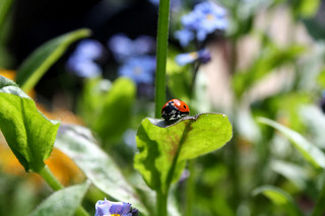Northeast Bug Predictions for This Spring
By Chris Williams on April 13, 2015.
 The National Pest Management Association has just published its “Bug Barometer” which predicts upcoming pest activity for various parts of the country based on the winter weather in each region. In case you’ve already forgotten, our winter weather in Massachusetts and New Hampshire amounted to “excessive snowfall and frigid temperatures.” Cold temperatures don’t necessarily kill off all of the insect pests, but extended cold can affect certain types of insects, either negatively or positively.
The National Pest Management Association has just published its “Bug Barometer” which predicts upcoming pest activity for various parts of the country based on the winter weather in each region. In case you’ve already forgotten, our winter weather in Massachusetts and New Hampshire amounted to “excessive snowfall and frigid temperatures.” Cold temperatures don’t necessarily kill off all of the insect pests, but extended cold can affect certain types of insects, either negatively or positively.
The Bug Barometer predicts this for the Northeast:
PREDICTION – “Extreme cold may impact stinging insect populations.”
WHY? – The future queens of wasps and bees spend the winter in protected places, while the rest of the colony dies off in the fall. In spring, the already mated queens emerge from hiding and start a new nest. Winter protection can only go so far, however. This past winter may have been just a bit too cold for too long. Repeated freezing and thawing is also rough on overwintering insects. Queens that weren’t well enough protected may have succumbed. (Don’t worry too much, plenty will survive!)
For more, see: How Do Insects Survive our New England Winters?
PREDICTION – “Extreme cold may delay termite swarm season.”
WHY? – Subterranean termites swarm primarily in early spring. Exactly when they swarm depends on several factors, but weather is a big one. Swarms usually occur on warm spring days just after a rain. Soil temperature is likely a triggering factor, too, since termite nests are in the soil. When winter carries on longer than usual, termite colonies are slow in waking up and producing the reproductive winged forms that do the swarming. If weather doesn’t cooperate, swarmers will wait in the colony for the right conditions of temperature and humidity that trigger their flight.
For more, see: Why do Termites Swarm?
PREDICTION – “Standing water from snow melt may increase mosquito populations.”
WHY? – Mosquitoes need standing water in order to reproduce. Some mosquito species specialize in exploiting temporary puddles where they lay their eggs. The more puddles, the more potential for mosquito development. Some female mosquitoes lay their eggs the previous fall in shallow depressions that are subject to flooding. Spring rains (or snow melt) fill the depressions, the eggs hatch and the larvae develop in the standing water. Sometimes, depressions with eggs may not hold water long enough for the mosquitoes to develop, but snow melt will help keep those puddles full.
For more, see: It’s Not Too Early for Mosquitoes!
Photo credit: CJ Isherwood / Foter / CC BY-SA